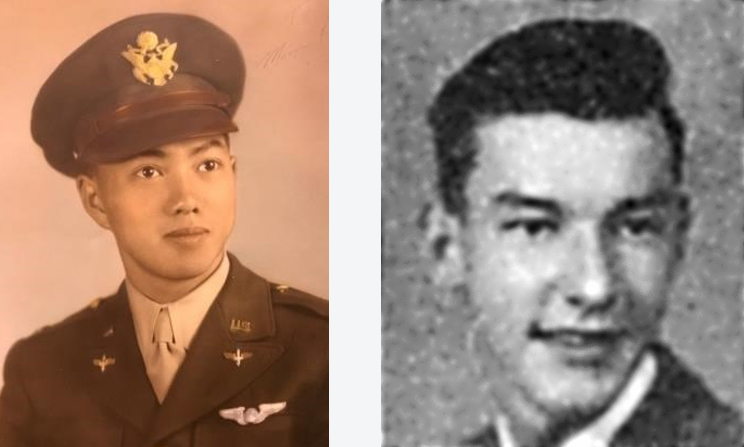The Fall of the Thunderbird. A Memorial Day story.

EAST BAY, CA — On Memorial Day we pause to remember the stories of those who have given their lives for their country. This is one of those stories.
On November 26, 1944, a B17-G bomber nicknamed the Thunderbird was deployed to bomb a synthetic fuel plant at Misburg, Germany. Three Bay Area natives were among the crew.
Second Lieutenant Alfred Soo, the navigator, graduated from Berkeley High School and was drafted in 1943. Bombardier Roger Randles attended Mount Diablo High in Concord. Also on board that day was waist gunner Sergeant Philip McCaffrey from Vallejo.
The B-17s were known as flying fortresses. Stories and photos showing heavily damaged B-17s returning to base attest to their reputation for toughness. The nine-person crew had flown two previous missions under the command of pilot Lt. Wayne Daniels. On this mission, however, they were assigned to fly a new aircraft. The Thunderbird had flown only one mission — the previous day.
Strategic tactics
More than 1,000 planes set off toward Berlin. But at the last minute they veered south as part of a ruse to trick the Germans into protecting the capital instead of the mission’s true targets. The plan worked only partially. The planes arrived 20 minutes later than planned, giving enemy planes time to move in and attack the squadron from behind.
The Thunderbird had been assigned to bomb a secondary target, the marshalling yards of Hamm, Osnabruck. As the plane approached the target, bombardier Randles took the controls for the bombing run. Randles noticed a warning light from the bomb bay doors and radioed Sgt. Wilbur A. James to check the doors. They were one minute away from the target.
Sgt. James found no problem with the doors. Lt. Daniels recalled watching the shadow of the plane’s turret gun as it circled over his seat, watching for enemy aircraft.
Then a near miss rocked the plane, followed by another. Less than 30 seconds before “bombs away,” a direct hit by anti-aircraft fire struck the Thunderbird, killing Waist gunner McCaffrey and two others. Daniels gave the order to bail out. Then, at 15,000 feet, the Thunderbird exploded.
An important tether
Alfred Soo reported later, “The morning I was shot down I overheard the supply clerk offer a tether to the airman in front of me. He explained that the tether attached the parachute to my harness and allowed me to remove the parachute during flight so I could perform my navigator duties without it getting in the way. I asked for a strap and it saved me when I got blown out of the plane.”
The explosion threw the surviving crew into the sky. Daniels lost track of time but tore up the mission plans as he parachuted down into enemy territory. Bombs dropped from other planes began to fall past him and one crew member’s chute got caught by a falling bomb. Daniels thought it was Randles, but other crew members did not believe Randles was wearing his chute when the plane disintegrated.
Thirty-five of the bombers did not make it back that day, and 146 American servicemen died, including Randles and McCaffrey.
Wayne Daniels and Alfred Soo, along with 165 members of that mission, became POWs. Soo spent several months in a hospital recovering from his wounds before being transferred to a POW camp, Stalag VIIA, in Moosburg. General Patton’s troops liberated the camp on April 9, 1945.
Second Lieutenant Alfred Soo received the Purple Heart for his injuries. He returned home to the East Bay following the war. After living 64 years in El Cerrito, he died peacefully on May 3, 2020.

